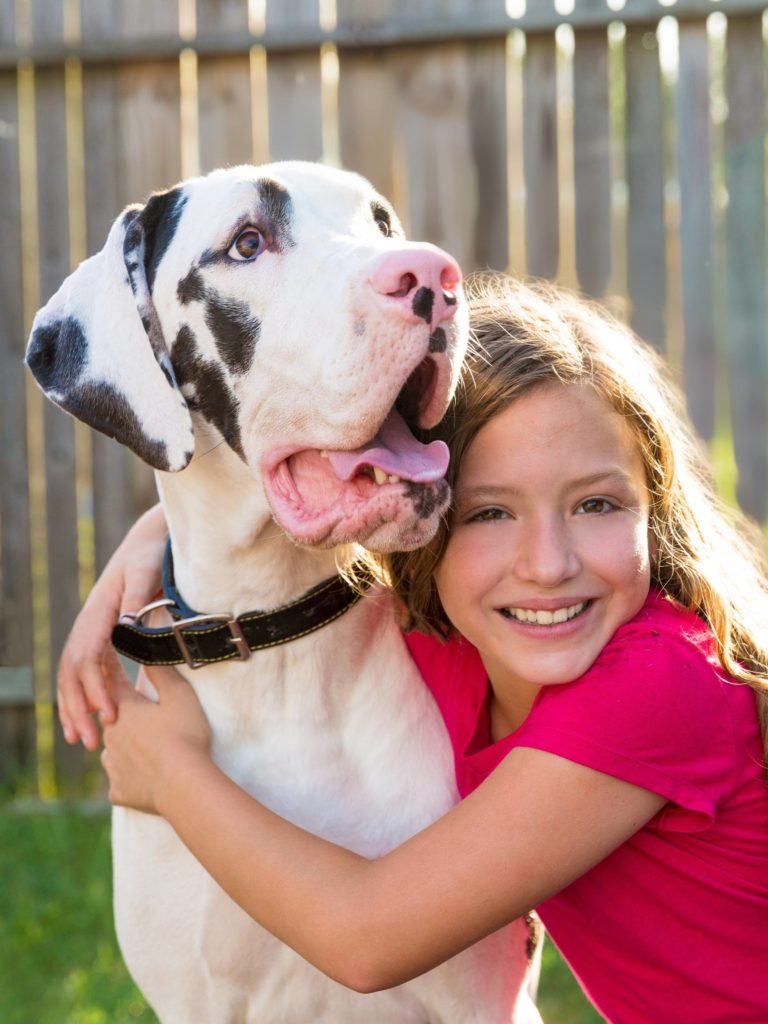We love to see Great Danes and kids together! Understandably, people have a lot of questions about this though. Because Danes are SO big, they can be seen as dangerous or unsafe to have around babies and children. While there is some truth to that (a jumping Dane is dangerous), Great Danes are often wonderful with children!
The breed standard calls for a gentle, confident, friendly dog. It is unacceptable for a Great Dane to be aggressive, snappy, or unstable, though some are. Knowing how to adopt or purchase a healthy, well-tempered Great Dane is key.
This topic today covers it all:
- Are Great Danes good with kids?
- Why do some Great Danes growl at children?
- Can a Great Dane learn to not be aggressive?
- How to develop safe and healthy relationships between Great Danes and children
To answer a few quick questions, yes Great Danes can make wonderful family pets. They are still, however dogs and giants at that. Read on for ideas to keep your kids from being squished, trampled, knocked over, and growled at!
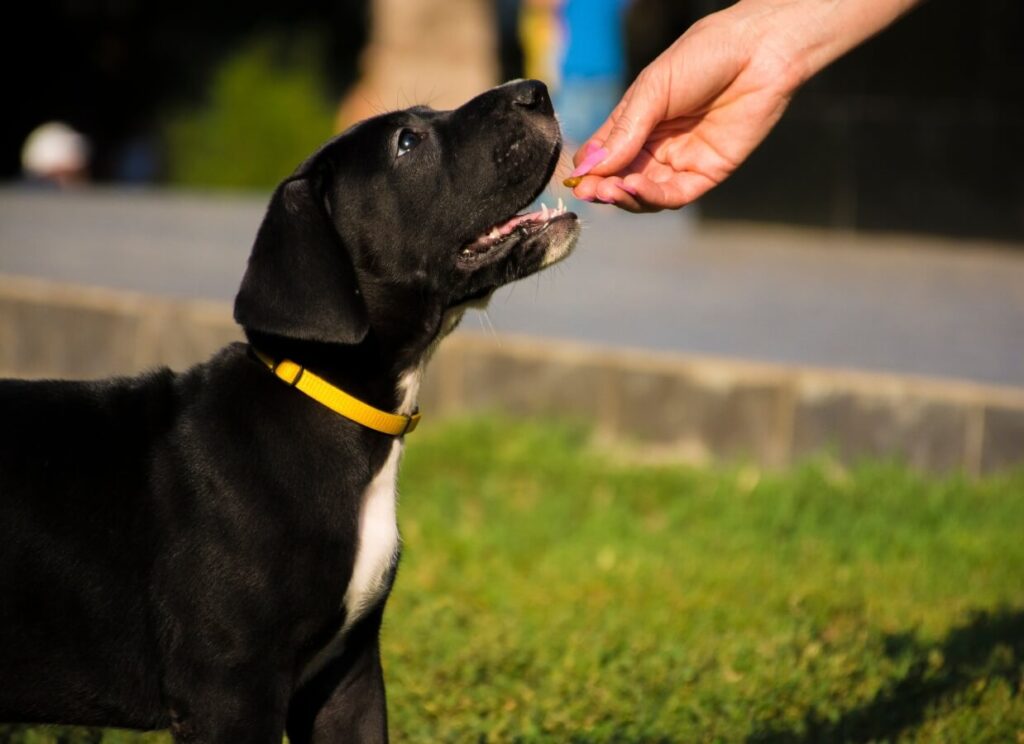
Are Great Danes Good for Families with Kids?
If you are considering a Great Dane for your family, here are some tips for choosing one that will integrate beautifully and be wonderful with kids.
Work with a rescue that can match you with a dog that has a known temperament, OR choose an ethical breeder. There is no middle ground here.
An ethical breeder will pair dogs with outstanding, kid and family-friendly temperaments, will fully socialize the puppies using Puppy Culture or a similar program, and support you for life if something isn’t working for you.
Most rescues are interested in lifetime placement: be honest with them about your lifestyle & needs.
Backyard and unethical breeding practices are nearly fully responsible for the reason why so many Great Danes have unstable temperaments (fearful, timid, aggressive, hard to train, out of control) that make them unsuitable for family life.
Temperament has a huge root in genetics, so make sure you are choosing a breeder who is being diligent about this. For more information on how to choose an ethical breeder, read our post on the topic.
We highly recommend reaching out to local Great Dane rescues as well. Inquire about fostering, volunteering, adoption, and donations.
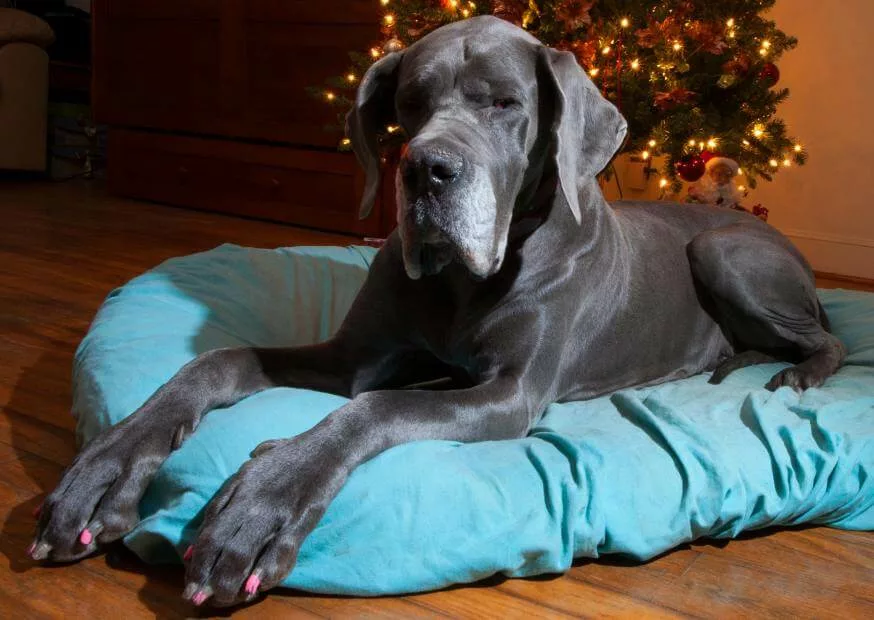
Training a Great Dane
Even a well-socialized, well-bred Great Dane puppy is going to need a ton of socialization and training!
Children run, scream, throw things, and fuss which makes them really, really fun for puppies to chase, nip, tug, and tackle.
This is NOT dominance and has nothing to do with ‘pecking order’. It’s simple puppy language. Puppies are immature, don’t yet know how to interact with humans, and do what feels good.
Chasing and tackling kids FEELS good. It’s super fun and then kids tend to naturally reward the behavior by squealing and trying to shout, tug back or run away.
As the adult in the room, it’s up to you to manage this behavior. Do not allow it to develop or be practiced. Crates, gates, leashes, a mat, and a pocket full of treats (to reward calm indifferent behavior towards children) are key. If the dog is playing gently with the kids, allow it. If the dog amps up, immediately leash up and redirect.
If you are trying to fix this by repeatedly scolding the dog, shocking it, squirting it, pinning it to the ground or shouting you risk teaching the puppy to associate kids with punishment. Yikes!
That wildly incorrect training method relies on the dog being allowed to practice the behavior first, and that’s the problem. Don’t allow practice. Teach, manage, and train your Dane.
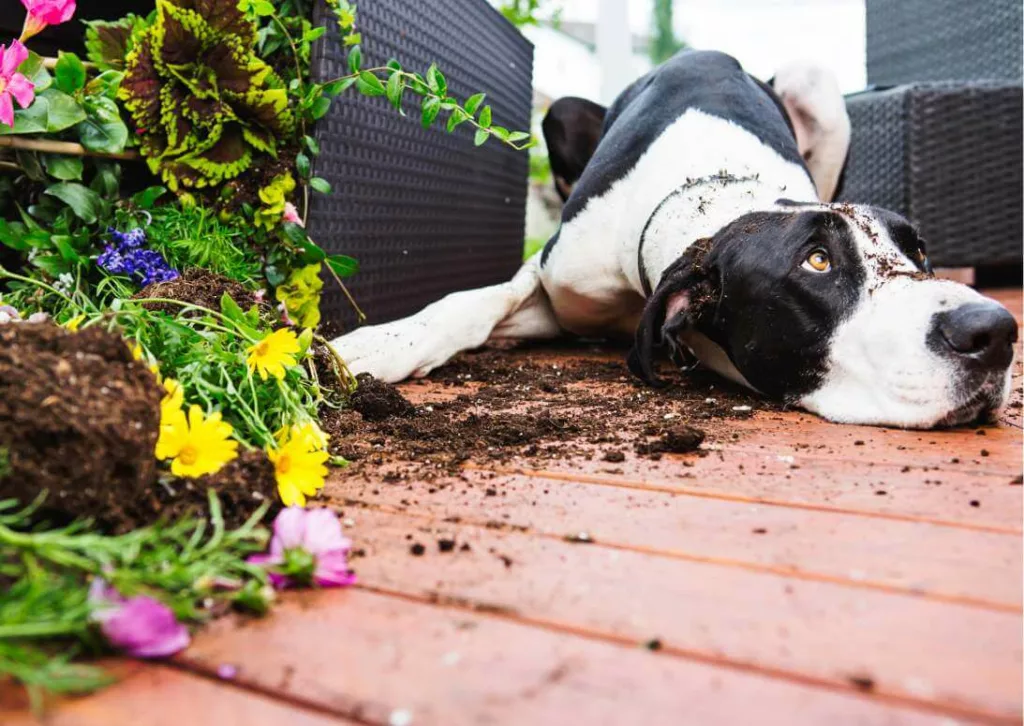
Training Children Around Great Danes
Kids sitting on Great Danes is NOT CUTE.
You will not change our mind on this one. It is never appropriate or safe to let children, even toddlers and babies, use Great Danes as a jungle gym, a horse, or pull their tails/ears/etc.
Most dog bites are from known family dogs, to children, and are often labelled as ‘out of the blue’.
Great Danes and Kids 101
This is why, and it results in children being harmed physically and emotionally. Otherwise, wonderful dogs end up in rescue or worse, euthanized. For more information on dog body language and appropriate child-dog interactions, visit www.stopthe77.com and watch the video.
Encouraging children to wrestle with the dog, hug it, lay on it, pin it down, take its food, and pull on the tail and ears so that it ‘gets used to it’ is a dangerous and misguided idea. Instead of asking an animal to tolerate being mishandled, teach your children how to appropriately interact with dogs.
A dog that has a positive relationship with children and has been taught how to play politely with them is much more tolerant of accidental mishandling. It’s that simple.
- Never allow children to take food, bones, or toys. Resource guarding (which quickly leads to aggression) tends to become worse when the dog is taught through repetition that they should worry about their resources (especially food) being taken from them.
- If a child (especially a friend or neighbor child) is trying to lay on, hug, scold or chase your Great Dane, step in immediately.
- Do not allow children to crawl or lay on your Great Dane. Even the most tolerant Dane can eventually snap, especially when older age means more pain and arthritis, or when your child tries that on a much less tolerant other dog they meet.
- Teach children how to freeze and become bored if a puppy starts to amp up. This will give you time to step in and redirect the puppy to something more appropriate.
- Teach children how to use praise, treats, and toys to interact with, train, and develop a positive mutual relationship with your Great Dane.
- Socialize your Great Dane around lots of kids! Socialization means positive exposure. Watch kids playing at a park. Hang out and watch kids riding bikes, playing tag, or swinging. Work on your basic obedience skills (sit, down, touch, look at me, leave it, wait, stay, come) while the children are playing.
If you are worried that your Great Dane puppy is being aggressive and not playing, we’ve put together a huge blog post with information for you.
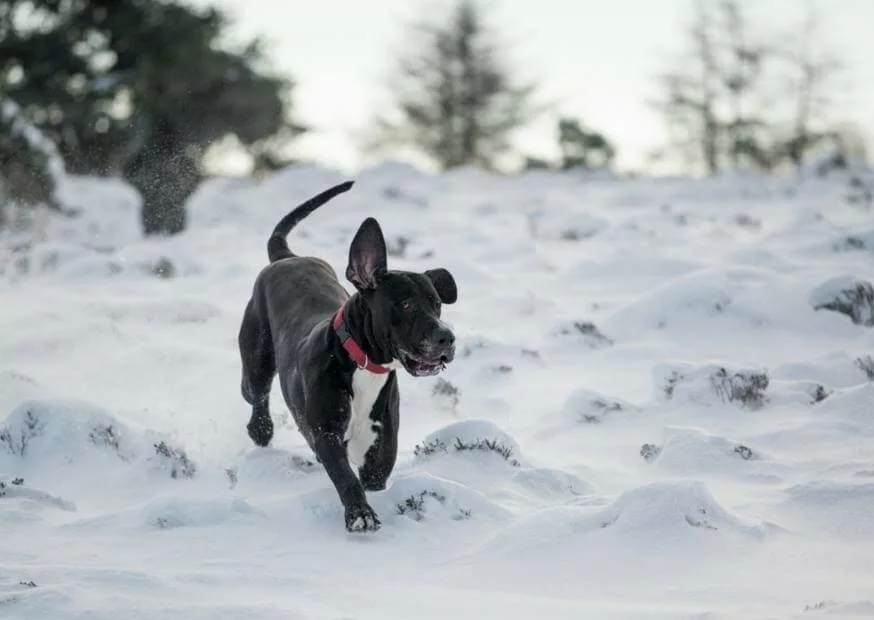
How to Handle a Great Dane that Growls at Kids
If you have a Great Dane who is growling, snapping, or barking at children, this section is for you!
Many factors can lead to this including poor socialization, bad past experiences, abuse, health, bad training methods, mishandling, and yes, genetics. It’s important to take it seriously.
If you have a Dane that has shown any signs of aggression, fear, or frustration towards children, seek out the help of a behaviorist as soon as possible. We also recommend reaching out to your breeder or rescue and letting them know.
Many trainers can do online consultations, which may cost less if you are on a budget.
If you have a Great Dane that looks uncomfortable around children, lifts a lip or even offers a growl, step in immediately. As above, crates, gates, leashes, and in this case, muzzles are valuable and important tools.
We do not recommend exposing a growly dog to children so they ‘get used to it’. Forcing a dog into a situation they don’t want to be in is called ‘flooding’, and can easily make the problem much, much worse. Not to mention, it’s dangerous for the dog and children involved.
If your dog is unstable around children or the behavior is new/out of the blue, start with a vet check. Pain and other problems, including thyroid disease and eye problems can lead to aggression.
There is no quick fix where your Dane will be magically ‘safe’ around kids. Using a cheap shock collar to punish the dog for growling, reacting, and being unstable around children is not the answer here. You MUST address the root cause. A good balanced trainer will use science-backed behavior modification and management methods, especially before layering in e-collar training.
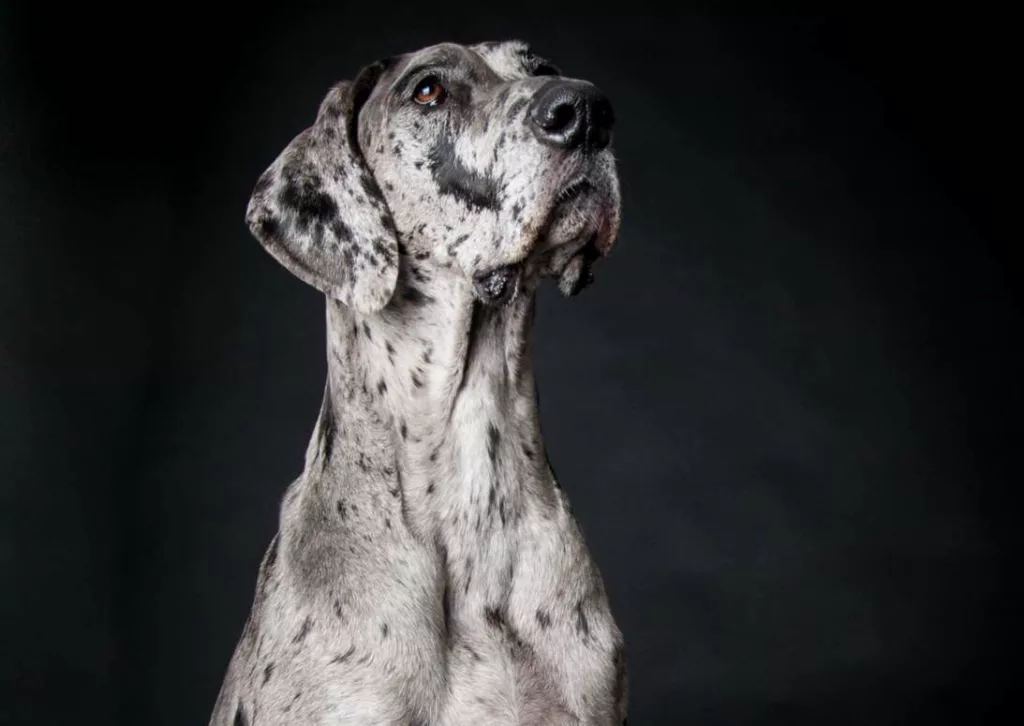
Great Danes as Family Pets
We believe Great Danes make wonderful family pets! Both of us have our Danes around children and their relationship is beautiful.
They play beautifully in the yard together and our intact male Great Dane (3 years as of this writing) LOVES to hang out with them while they play catch, dig in the sandbox, swing on the playset, and build forts out of snow.
We’ve also trained our puppy to be gentle enough on a leash that our 54 lb child can walk him.
Our adult Great Dane is a rescue that had a horrible puppyhood, she too is wonderful with kids. She’s a dog that enjoys and seeks out children to snuggle with her.
Socialization, training, and genetics go a long way here! Be diligent, be the adult in the room. Recognize what your Dane is capable of and manage the environment. Help your children build a positive relationship with your Great Dane!
Rescue Great Danes & Children
Many rescues will not adopt Great Danes to homes with children under the age of 8 or 10. This can be disheartening, but there are many reasons for it:
- Some rescue Danes simply aren’t good with kids.
- Because children are the most susceptible to being bit, and because so many people allow children to treat dogs inappropriately, the Dane rescues may set dogs up to fail when they send them into homes with young children.
- Danes are GIANT breed dogs that can easily knock over a kid, whack them with a tail, or squish them accidentally.
- The rescues must place dogs for life. Child-free applications may receive priority.
The Danes that come into the rescue with amazing temperaments that will be great with children are also the ones that tend to receive a lot of applications. These aren’t the dogs that typically or often sit waiting for a home. Many of them are snatched up by fosters (foster fail or foster to adopt) and never become available.
The rescue wants NO chance that the dog will be returned to them and need rescue and re-home again, and they have to make choices that aren’t always understood by individual adopters.
If you want to adopt a Great Dane and have young children, develop a relationship with the rescue! Volunteer for them. Show them that you have Giant breed experience and are a dedicated, thoughtful, and educated dog owner. Be there when those dogs come into rescue, instead of waiting for one to pop up and throwing your application into the mix, then getting upset when they don’t choose you.
Don’t just run to the nearest backyard breeder out of frustration, it’s one of the worst things you can do for the breed as a whole. There is absolutely nothing wrong, however with finding and choosing an ethical breeder to purchase a puppy from, especially if adoption isn’t going to work for you right now.

